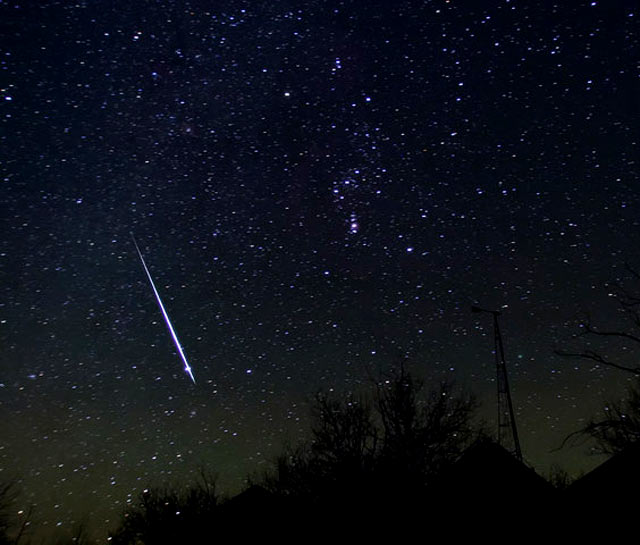The annual Geminid meteor shower, one of the best shooting-star displays each year, returns to our skies late this week. Despite interference from moonlight, plenty of bright meteors should still shine through.

When it comes to annual meteor showers, mid-December's Geminids rank right up there with August's Perseids as a great, dependable display. Dynamicists predict that this month the Geminids will peak on the nights of Saturday and Sunday, December 13th and 14th.
On those nights, under a clear, dark sky, you might see a "shooting star" every minute from about 10 p.m. local time until dawn. If your sky has lots of light pollution then the count will be lower, but the brightest meteors will still shine through. Light from a last-quarter Moon won't become a hindrance until it rises close to midnight.
The Geminids' peak might still be several days away, but if you've got a cloud-free night between now and then, start looking! This shower offers quite a long run-up to its peak. In fact, cameras in NASA's All-Sky Fireball Network started sweeping up bright Geminids back on December 1st.
So why do we see these particular meteors every mid-December, like clockwork? Meteor showers happen when our planet plows though a stream of fine particles that have been shed by a comet and spread out along its orbit. Earth crosses the Geminids' orbit each December. But these meteors are unusual — their source isn't a comet but an asteroid, called 3200 Phaethon. Phaethon isn't very large, only about 3 miles across, and it was discovered fairly recently, in 1983. Before then no one knew where the Geminids came from.
Phaethon's most remarkable distinction is that it approaches the Sun closer than any other named asteroid: its perihelion is only 13 million miles from the Sun. That's less than half of Mercury's perihelion distance, and it means temperatures can climb to more than 1,000° Fahrenheit. Some astronomers think Phaethon once was a comet, whose ices were baked away long ago. Others think it might be a "rock comet", whose surface is cracking and crumbling under the Sun's intense heat.
So the Geminid meteors are caused by comet crumbs, or asteroid crumbs, or maybe both. But no matter what their true source, they provide a great visual treat this time of year.
Track a year's worth of sunsets and sunrises — and all the celestial highlights that happen in between — with our annual Skygazer's Almanac (for latitude 40° north).
 1
1
Comments
Mike
December 5, 2014 at 1:18 pm
Last week I stepped outside just as a slow moving, bright and fiery, meteor passed moving east to west. I am thinking it was a fireball due to the brightness and appearance of flames. The radiant would have been in-line with the constellation Gemini which was just on the eastern horizon. If it was part of the Geminids, then this up coming shower could be very interesting.
Mike, Omaha,NE.
You must be logged in to post a comment.
You must be logged in to post a comment.